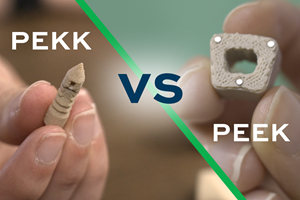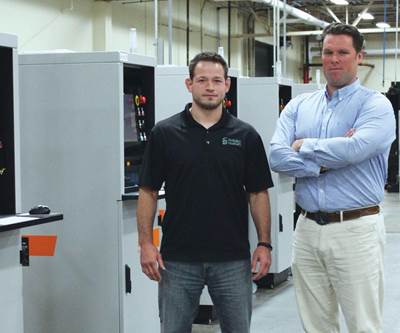Additive Manufacturing and 3D Printing Are Two Different Things
And as AM continues to advance, the differences are becoming more pronounced and more important.
It is time to confront a question at the heart of what this site is about and what we are interested in. Namely: Is additive manufacturing the same as 3D printing?
The answer is no. The two terms describe two different things. And the difference is becoming increasingly important—as recently posted articles show.
To be sure, the terms overlap. They can be used in ways that make them sound like synonyms. But the relationship between them and the difference between them is this: 3D printing is the operation at the heart of additive manufacturing, just as “turning” or “molding” might be the operation at the heart of a conventional manufacturing process. In short, additive manufacturing requires and includes 3D printing, but it also entails more than 3D printing, and it refers to something more rigorous.
With this site, our focus is manufacturing. The promise we see in additive technology is manufacturing. And seemingly with each new development in the additive space, that promise comes more clearly into view. Now, we are beginning to see companies committing to additive manufacturing so fully that they are ramping up entire facilities oriented around this method of making production parts.
Two examples recently featured are located on different continents. Our story on Tangible Solutions describes the questions and the hurdles a startup company faces as it aims to fully realize full-scale additive production. In this, 3D printing the component itself is arguably the most straightforward step. There is also the design of the support structures, the postprocessing operations and the considerations necessary to realize the process control sufficient for tight repeatability. Along with 3D printing, all of this is part of additive manufacturing as well.
Then there is the German company FIT, which is thinking about the promise to be found in the phase that comes next. If a facility can be set up to reliably and efficiently deliver contract manufacturing via AM, then couldn’t that very facility be reproduced in other regions to deliver short-lead-time production to customers in various places?
The FIT example in particular prompts another fundamental question about additive. Namely: Is the right way into AM by diversifying into it out of conventional manufacturing, or is the right way instead a clean-sheet approach involving a separate organization or separate company from conventional manufacturing teams?
(There are even shades of gray. Another company recently covered, Arizona Home Floors, became a manufacturer once it complemented outsourcing of conventional manufacturing with a commitment to in-house AM.)
Which of the two choices is the better way? I don’t know the answer. None of us do. We will find out over time, and maybe either choice—building off of conventional manufacturing or taking a focused approach to additive—represents an equally viable way in. For now, you can consider the question yourself. After reading the articles linked above about manufacturers taking a clean-sheet approach, read another recent story about a manufacturer that diversified into AM out of its success in machining. If one of these types of companies is able to succeed with the new approach to production more effectively than the other, then it might be that the business model is yet another element to consider in leveraging 3D printing into additive manufacturing.
Related Content
Understanding HP's Metal Jet: Beyond Part Geometry, Now It's About Modularity, Automation and Scale
Since introducing its metal binder jetting platform at IMTS in 2018, HP has made significant strides to commercialize the technology as a serial production solution. We got an early preview of the just-announced Metal Jet S100.
Read MoreHow to Build 10,000+ Shot Molds in Hours
Rapid tooling isn’t so rapid when it takes days to 3D print a metal mold, and then you still must machine it to reach the necessary tolerances. With Nexa3D’s polymer process you can print a mold in hours that is prototype or production ready and can last for more than 10,000 shots.
Read More3D Printing with Plastic Pellets – What You Need to Know
A few 3D printers today are capable of working directly with resin pellets for feedstock. That brings extreme flexibility in material options, but also requires greater knowledge of how to best process any given resin. Here’s how FGF machine maker JuggerBot 3D addresses both the printing technology and the process know-how.
Read MoreUnderstanding PEKK and PEEK for 3D Printing: The Cool Parts Show Bonus
Both materials offer properties desirable for medical implants, among other applications. In this bonus episode, hear more from Oxford Performance Materials and Curiteva about how these companies are applying PEKK and PEEK, respectively.
Read MoreRead Next
Building an Additive Manufacturing Business for Production
What does it look like to build a business based on AM production from the ground up? An Ohio medical device contractor is finding out.
Read MoreGE Additive Rebrands as Colibrium Additive
As part of the brand name transition, both the Concept Laser and Arcam EBM legacy brands will be retired.
Read MoreVideo: Intelligent Layering Metal 3D Printing at 3DEO
Contract manufacturer 3DEO delivers metal parts using Intelligent Layering, a binder jetting-like 3D printing process the company developed and operates internally. Here’s how it works.
Read More










.png;maxWidth=300;quality=90)












